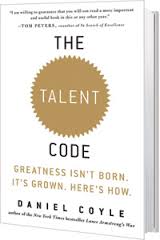
I am including the only accounting joke I have created “What is the difference between Russian profit and American profit?
A Profit and Loss Statement is one of three important financial measurement tools. It captures five areas of financial measurement.
There are two methods of recognizing income and expense.
Cash Based Accounting will only recognize income when the money is in the bank and will only recognize expense when it is paid.
Accrual Based Accounting recognizes income as soon as it is billed and recognizes expense when you receive the invoice.
I prefer Accrual Based because it shows the complete financial picture, however you must remind yourself that Accrual Based Accounting may not reflect reality if everyone billed has not yet paid and if you have not paid all of your bills.
That’s why the Balance Sheet was invented. Among other things it accounts for the money people still owe you (Accounts Receivable) and the money you have not yet paid (Accounts Payable)
Revenue: The money you receive for doing the work you do. I measure everything as a percentage of Revenue so Revenue always is 100%
Cost of Sale: The money you spend to do the work. I only count costs that can be directly tracked to specific jobs. If a cost is shared between two or more jobs it should go into Overhead. Ie…you cannot accurately track the amount of gasoline used by your truck for a specific job so usually gasoline is a line item in overhead.
The usual divisions in ‘Cost of Sale’ are:
- Labor (the hourly rate you pay and does not include benefits)
- Equipment(the stuff you install that has a serial number)
- Material(the stuff you install without a serial number)
- Sub contractors(sometimes it is better to hire someone, who is not a full time employee, to do part of the work. They have a back hoe and know how to use it. )
- Permits(Often, the city or municipality requires you to pay for a permit which ‘permits’ you to do the work)
- Warranty reserve(this is money you set aside in the event that you have to go back and fix something and don’t charge the customer. Usually, work is warranted for 12 months only.)
A financial model I like puts the Cost of Sale at 60% of Revenue or less.
Gross Margin: The money left over after you subtract the Cost of Sale from the revenue. I’m thinking 40% or more is good.
Overhead: All remaining expenses. A great target is for overhead to be 30% or less.
Net Profit: Any money left over after you subtract the overhead from the gross margin. This is usually the money the government takes 35% or more from you. We would like this to be 10% or more.
Net Loss: This happens when the overhead costs are more than the gross margin. If you keep doing this your business will die. Currently, the government has not found a way to tax a loss.
It is important to remember that the purpose of Profit is to pay the expenses on the balance sheet. You cannot put loans or revolving credit lines on the P & L (usually P & L captures only 12 months at a time).
The joke: American profit is “Net Profit” and Russian profit is “Nyet profit”
Over the next number of weeks, my intention is to alternate “Book Reviews” and “Random Thoughts” every other week.
My “Random Thoughts” will focus on a series of seven views regarding the importance of “Counting” in a business.



